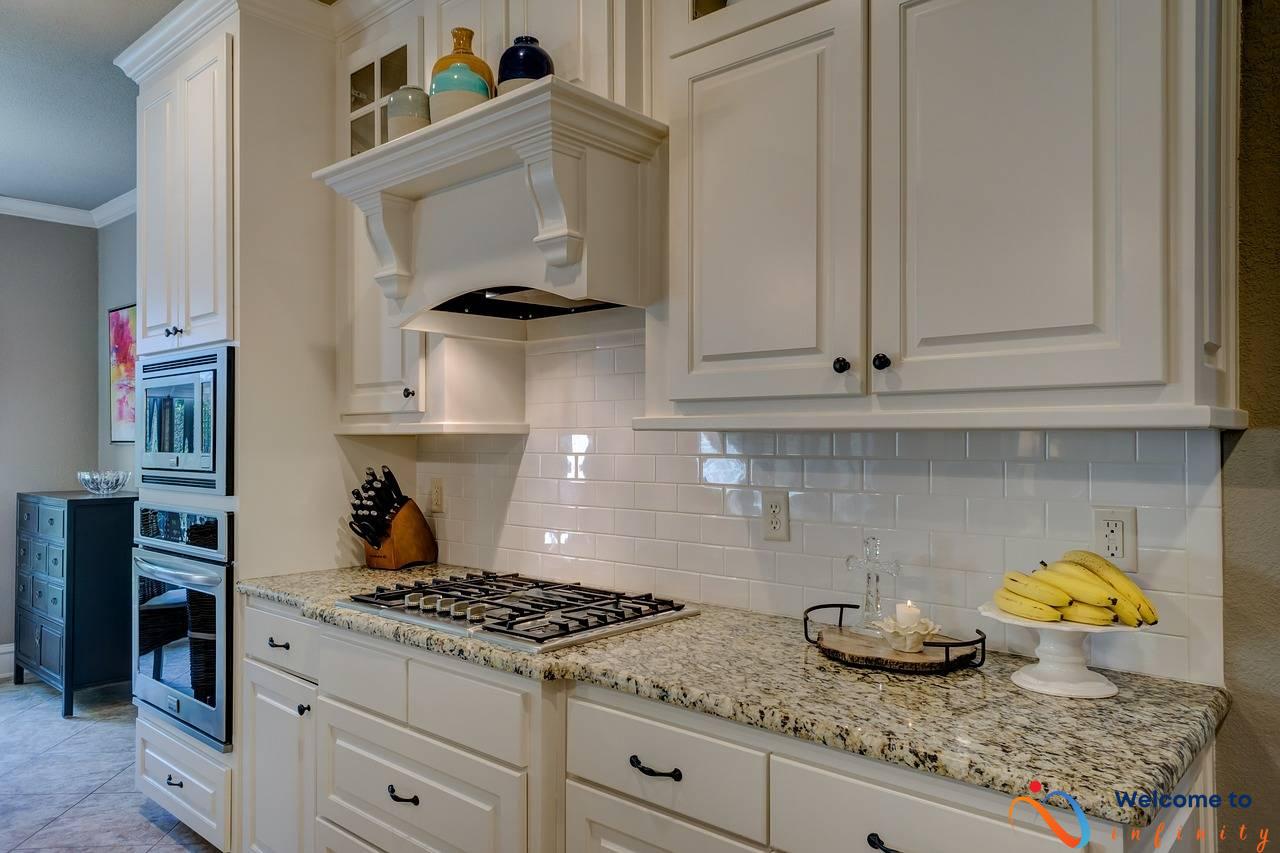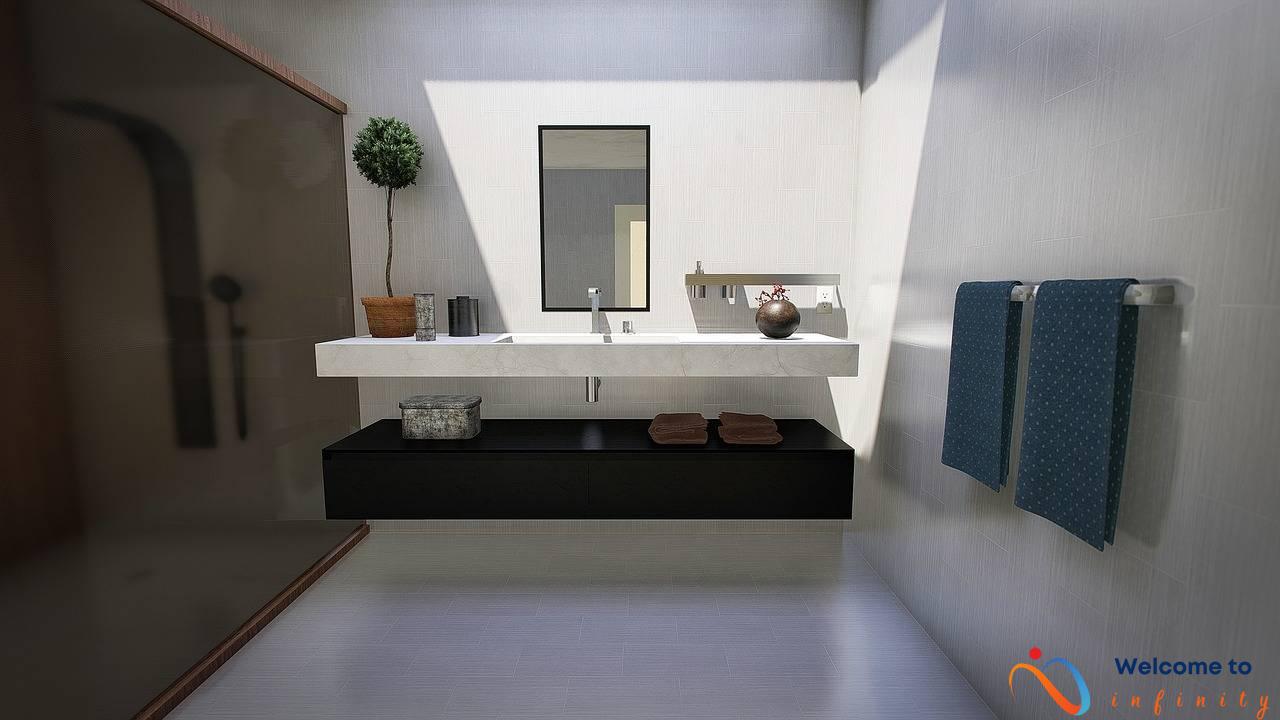Incorporating sustainable and eco-friendly elements into your home décor not only helps the environment but also promotes a healthy and sustainable lifestyle. Sustainable design has gained popularity in recent times, and it's no surprise why. From reducing carbon footprint to reducing energy consumption, incorporating sustainable elements into your eclectic home can have a positive impact on your overall wellbeing.
When it comes to choosing sustainable materials for your home decor, various options are available. Materials like bamboo, organic cotton, linen, and recycled glass are excellent choices that can add a unique and sustainable touch to your home. Additionally, opting for eco-friendly furniture options, such as upcycling old furniture or incorporating salvaged materials, can help reduce waste and promote sustainability.
Moreover, incorporating energy-efficient lighting options and smart technology, such as smart thermostats, can also help reduce energy consumption in your home, leading to cost savings and reducing your home's environmental impact. Additionally, bringing the outdoors inside with plants and natural textiles can help improve indoor air quality and create a refreshing and sustainable environment in your eclectic home.
In conclusion, incorporating sustainable elements into your eclectic home can have several environmental and personal benefits. Whether it's choosing sustainable materials or investing in smart technology, there are various options available that can promote sustainable living and create a healthy and sustainable home.
The Benefits of Going Green
Going green is not just a trend, it's a necessity to protect the environment and our health. Incorporating sustainable elements into your home design is a great way to reduce your carbon footprint, save energy, and create a healthier living space.
One of the benefits of going green is reducing your impact on the environment. By choosing sustainable materials and energy-efficient appliances, you can lower your energy consumption, reduce waste, and decrease the amount of harmful chemicals released into the environment. This not only helps to preserve the environment, but it also ensures a better future for future generations.
Going green also offers health benefits. By reducing the amount of toxic substances in your home, you can improve your indoor air quality, which can lead to fewer respiratory problems, allergies, and other health issues. Additionally, when you choose organic materials, you avoid exposure to harmful pesticides, which can cause serious health problems.
Another benefit of incorporating sustainable design into your home is saving on energy costs. Energy-efficient appliances and lighting can reduce your utility bills significantly. Additionally, by producing your own energy through solar panels, you can save money on your electricity bills and reduce your reliance on non-renewable energy sources.
In conclusion, incorporating sustainable elements into your home décor has numerous benefits, including protecting the environment, improving your health, and saving on energy costs. By choosing eco-friendly materials and technology, you can make a positive impact on the world while creating a beautiful and comfortable living space.
Choosing Sustainable Materials
Choosing sustainable materials for your home decor not only supports the environment but also adds a unique and eclectic touch to your space. From natural wood to recycled materials, there are a variety of options to choose from that can give your home a green upgrade.
One popular option is bamboo, which is a renewable and fast-growing material that can be used for everything from flooring to furniture. Another sustainable material is cork, which is harvested from the bark of cork oak trees and can be used for flooring or as an accent material. Recycled glass is also a great option for adding a pop of color and texture to your home decor, as it can be used for vases, countertops, and even tiles.
If you're looking for sustainable furniture options, consider pieces made from reclaimed or upcycled materials. This includes repurposing items such as pallets or old furniture into new and functional pieces. Alternatively, look for furniture made from sustainably sourced wood or natural materials like rattan and hemp.
When it comes to decor, try incorporating salvaged materials such as old wood or metal into your space. This not only adds a unique and vintage touch but also reduces waste and supports the environment. Finally, consider using eco-friendly paints or finishes to further reduce your home's environmental impact.
Overall, there are a variety of sustainable materials to choose from when it comes to decorating your home. By incorporating eco-friendly options, you can create a stylish and unique space that also supports the planet.
Furniture
Choosing eco-friendly furniture is an essential part of incorporating sustainable elements into your home décor. Here are some tips for choosing stylish and sustainable furniture:
- Look for furniture made from materials such as bamboo, reclaimed wood, or cork, which are renewable and sustainable options.
- Consider purchasing furniture made from recycled materials, such as plastic or aluminum. It's an eco-friendly option that helps reduce waste and conserve resources.
- Reupholster old or worn furniture instead of buying new items, which can be costly and leave a carbon footprint.
- Choose furniture that is designed to last for years. Investing in high-quality and long-lasting furniture helps reduce waste and carbon emissions associated with the production process.
- Consider purchasing secondhand furniture or looking for vintage pieces. It's a sustainable and unique option that also helps reduce waste.
By considering these tips, you can choose eco-friendly furniture options that align with your personal style while reducing your carbon footprint and supporting sustainable design practices.
Upcycling
If you're looking for a unique and sustainable way to decorate your eclectic home, upcycling old furniture may be the perfect solution. Upcycling involves taking old furniture and giving it a new purpose or function instead of throwing it away. Not only is upcycling eco-friendly, but it can also be a fun and creative way to add a personalized touch to your home décor.
There are many ways to upcycle old furniture, depending on your personal style and preferences. For instance, you can transform an old dresser into a stylish bookshelf or a storage unit. You can also give old chairs new life by reupholstering them with eco-friendly materials such as organic cotton or hemp fabric.
If you're not particularly handy, you can still upcycle old furniture by simply repainting it or adding some hardware. For example, you can update an old wooden table by painting it a bold color or by adding new knobs to the drawers. This is an easy DIY project that can make a big impact on your home décor.
Upcycling is also a cost-effective way to decorate your home without breaking the bank. Instead of buying new furniture, you can use what you already have and give it a fresh new look. This is not only budget-friendly but also eliminates the environmental impact of producing new furniture.
Overall, upcycling old furniture is a great way to incorporate sustainable elements into your eclectic home. With a little creativity and some elbow grease, you can give your old furniture a new life and add a unique touch to your home décor.
Salvaged Materials
If you're looking for ways to incorporate sustainable elements into your eclectic home décor, using salvaged materials is a great place to start. Salvaged materials are items that have been rescued from a previous use and given a new life. Not only is this good for the environment as it reduces waste, but it also adds a unique and personalized touch to your home.
One of the easiest ways to incorporate salvaged materials into your home décor is through furniture. Look for items like vintage dressers, reclaimed wood coffee tables, or old metal filing cabinets that can be repurposed as a statement piece in your home. Instead of buying new furniture, upcycling these pieces not only keeps them out of a landfill, but it also adds character and story to your home.
Another way to incorporate salvaged materials into your home is by using them as décor. A collection of vintage plates or frames can add charm to a blank wall, while old metal numbers salvaged from a business can be turned into a unique and eye-catching clock. Salvaged wood can also be used for shelves or as a wall accent to add depth and texture to a room.
If you're feeling crafty, salvaged materials can also be used in DIY projects. Old wooden pallets can be turned into outdoor furniture or a statement piece for your living room. An old ladder can be used to create a bookshelf or plant stand. The possibilities are endless, and the end result will be a piece that is one-of-a-kind and eco-friendly.
Salvaged materials can also be used in smaller ways throughout your home, such as incorporating salvaged hardware into your DIY projects or incorporating antique doorknobs into your décor. By using salvaged materials, you not only reduce waste and help the environment, but you also add a personal and unique touch to your home décor.
Lighting
Choosing energy-efficient lighting options is an important part of incorporating sustainable elements into your home décor. Traditional incandescent bulbs consume a lot of energy, while LED bulbs use a fraction of the electricity and can last up to 25 times longer. Consider replacing old light fixtures and bulbs with energy-efficient options to reduce your energy consumption.
In addition to LED bulbs, there are other energy-efficient lighting options to explore. Compact fluorescent bulbs, for example, use less energy and last longer than traditional bulbs. They also emit less heat, which can help reduce your cooling costs in the summer. You can also consider installing dimmer switches, which allow you to adjust the lighting levels and reduce energy consumption.
If you're looking for a unique and eco-friendly lighting option, consider using solar-powered lights. These lights use solar cells to convert sunlight into electricity, which can power the lights at night. They are ideal for outdoor lighting and can help reduce your electricity costs.
When choosing your lighting fixtures, be sure to look for the ENERGY STAR certification. This certification indicates that the fixture meets strict energy efficiency guidelines set by the U.S. Environmental Protection Agency. ENERGY STAR certified fixtures use 90% less energy than their traditional counterparts, which can help save you money on your energy bills while reducing your carbon footprint.
- Replace old light fixtures and bulbs with energy-efficient options, such as LED or compact fluorescent bulbs.
- Consider installing dimmer switches to adjust lighting levels and reduce energy consumption.
- Use solar-powered lights for an eco-friendly outdoor lighting option.
- Look for energy-efficient fixtures with the ENERGY STAR certification.
Plants and Natural Elements
Bringing plants and natural elements into your home can add a refreshing touch while also promoting sustainability. Indoor plants, for example, not only purify the air but also provide a calming effect and can enhance overall well-being. Some plants that thrive indoors include snake plants, peace lilies, and spider plants.
In addition to plants, incorporating natural textiles like organic cotton and linen into your home décor can also have a positive impact on the environment. These materials are biodegradable, meaning they decompose naturally without harming the ecosystem. They are also free from pesticides and chemicals typically used in conventional textile production.
If you have a green thumb, consider creating your own indoor herb garden using recycled materials like old jars and cans. This DIY project not only repurposes items that would otherwise go to waste but also provides easy access to fresh herbs for cooking and seasoning.
When it comes to incorporating sustainable elements into your home, the options are endless. Whether you choose to add plants, natural textiles or DIY projects, each small step makes a positive difference in reducing our environmental impact.
- Indoor plants improve air quality
- Natural textiles are biodegradable and free from harmful chemicals
- Create an indoor herb garden using recycled materials
Indoor Plants
Indoor plants not only add a pop of color and natural beauty to your home décor, but they also have many health benefits. Plants are known for their air-purifying qualities, which can improve the air quality inside your home. Some of the best indoor plants to add to your space include:
- Spider Plant
- Snake Plant
- Peace Lily
- Rubber Plant
- Areca Palm
Spider plants are especially great for those who may not have the greenest thumb. They are low-maintenance and can survive in low-light conditions. Snake plants are another easy-to-care-for option and can also improve indoor air quality by removing toxins. Peace lilies are beautiful plants that can also improve air quality and can grow in low to medium light.
Rubber plants and Areca palms are perfect for those with larger spaces to fill. Rubber plants are known for their large leaves that can grow up to 12 inches long and they thrive in bright, indirect light. Areca palms are great for adding a tropical touch to your space and require bright, indirect light to thrive.
When choosing indoor plants, it is important to consider their specific care requirements, including their sunlight and water needs. Many plants come with care instructions, but if you are new to indoor gardening, it may be helpful to do some research or seek advice from a local plant nursery. Adding indoor plants to your space not only looks beautiful and refreshing but can also improve the air quality and overall health of your home.
Natural Textiles
If you're looking to incorporate sustainable materials into your home décor, natural textiles are a great place to start. Not only are fabrics made from organic cotton, linen, and hemp better for the environment, but they're also better for your health since they don't contain harmful chemicals.
When choosing natural textiles, look for products that are certified organic by organizations such as GOTS (Global Organic Textile Standard) and OEKO-TEX. Organic cotton is a popular choice due to its softness and durability, and it's available in a wide range of colors and textures. Linen is another great option since it's made from flax plants which require less water and pesticides than other crops.
To incorporate natural textiles into your home décor, consider using organic cotton bedding, linen curtains, or hemp rugs. You can also opt for slipcovers made from natural fabrics, which are an easy way to update existing furniture without having to purchase new items.
If you're feeling creative, consider upcycling old clothing or fabric scraps into new home décor items such as throw pillows or quilts. This is a great way to reduce waste and give new life to items that would otherwise end up in a landfill.
When caring for natural textiles in your home, it's important to use gentle, eco-friendly detergents that won't harm the environment or your health. Hang dry your items instead of using a dryer whenever possible, which will save energy and extend the life of your fabrics.
Incorporating natural textiles into your home décor is a simple and effective way to make your space more sustainable. By choosing textiles made from organic and eco-friendly materials, you can reduce your environmental impact and create a healthier living space for yourself and your family.
Smart Technology
In today's tech-savvy world, there are numerous smart technology options available that can help reduce your home's environmental impact and save energy. From smart thermostats to solar panels, these innovations have made it easier than ever to incorporate sustainable elements into your home décor while also cutting down on your electricity bills.
The first smart technology option to consider is a smart thermostat. This device can learn your temperature preferences and automatically adjust your home's temperature accordingly. This results in a reduction in energy consumption and thus a decrease in your electricity bills. Some popular smart thermostat choices include Nest, Ecobee, and Honeywell.
Another influential and increasingly popular sustainable element is solar panels. They harness the power of the sun to provide energy for your home, significantly reducing your home's carbon footprint, and ultimately saving you money. As long as your home receives ample sunlight, solar panels can be a great investment in the long term.
Besides, consider the energy-efficient appliances and gadgets that have eco-friendly capabilities such as LED lightbulbs, energy-saving washing machines and refrigerators, and smart power strips that turn off devices when not in use. All of these sustainable elements are not only beneficial to the environment but can also help you to be financially wise.
In conclusion, incorporating smart technology options into your home can be an effective way to minimize your environmental impact and conserve energy. Research and evaluate the various options available, and consider selecting devices that blend with your home's décor without compromising on functionality or sustainability. By taking the time to assess and invest in sustainable technology, you become an integral part of creating a greener planet.
Smart Thermostats
Smart thermostats are the latest technological advancement in home heating and cooling systems. They are designed to regulate the temperature of your home automatically based on your preferred settings and daily routines. These devices allow you to control the temperature from anywhere using your smartphone or tablet, making them both convenient and energy-efficient.
One of the primary benefits of smart thermostats is their ability to reduce energy consumption and lower your energy bills. They do this by learning your daily routines and adjusting the temperature of your home accordingly. For example, if you leave for work every day at the same time, your smart thermostat will automatically adjust the temperature to save energy while you are away.
Smart thermostats also provide real-time energy usage data, allowing you to monitor your energy consumption and identify areas where you can save energy. They can even make suggestions for how to reduce energy consumption, such as adjusting the temperature by a few degrees or setting a schedule for when your HVAC system turns on and off.
Another great feature of smart thermostats is their compatibility with other smart home devices. For example, if you have a smart home security system, your thermostat can integrate with it to automatically adjust the temperature if a door or window is opened or closed.
Overall, incorporating a smart thermostat into your home is a great way to save energy and reduce your carbon footprint while still maintaining a comfortable indoor temperature. With their sleek design and user-friendly features, smart thermostats are a smart investment for any homeowner looking to lower their energy bills and live more sustainably.
Solar Panels
Are you looking for ways to reduce your carbon footprint and save on energy costs? Look no further than solar panels! These innovative devices harness the power of the sun to provide your home with clean, renewable energy.
Solar panels work by converting sunlight into electricity, which can then be used to power your household appliances and devices. By reducing your reliance on traditional electricity sources, you can significantly reduce your carbon footprint and help protect the environment for future generations.
In addition to their environmental benefits, solar panels can also save you money on energy costs. By generating your own electricity, you can significantly reduce your monthly energy bills, helping you save money in the long run.
If you're interested in installing solar panels in your home, it's important to do your research and choose a reputable installer. You may also want to consider the potential impact on your home's value, as some studies have shown that homes with solar panels are more attractive to buyers and may sell for more.
Incorporating solar panels into your home's sustainable design is just one way to reduce your environmental impact and save on energy costs. By exploring a variety of eco-friendly elements, from upcycled furniture to natural textiles, you can create a unique and sustainable home that reflects your personal style and aligns with your values.
Conclusion
Incorporating sustainable elements into your home décor not only benefits the environment but also provides numerous advantages for your overall health and well-being. By choosing eco-friendly options, you are reducing your carbon footprint and helping to preserve the planet for future generations.
There are a variety of sustainable materials and furniture options available, ranging from bamboo to salvaged materials. Upcycling old furniture is not only a cost-effective approach, but it also adds character and uniqueness to your home décor. Energy-efficient lighting and smart technology options, such as smart thermostats and solar panels, can offer significant long-term savings on energy costs.
Plants and natural elements can also be incorporated into your home décor for a fresh and sustainable touch. Indoor plants can improve indoor air quality and add natural beauty to your living space. Natural textiles like organic cotton and linen can also be used for upholstery and bedding.
By choosing sustainable options, you are not compromising style or comfort. In fact, incorporating sustainable design into your home décor can enhance the aesthetic appeal and functionality of your living space. So why not explore the variety of sustainable options available and make a positive impact on the environment and your home?











